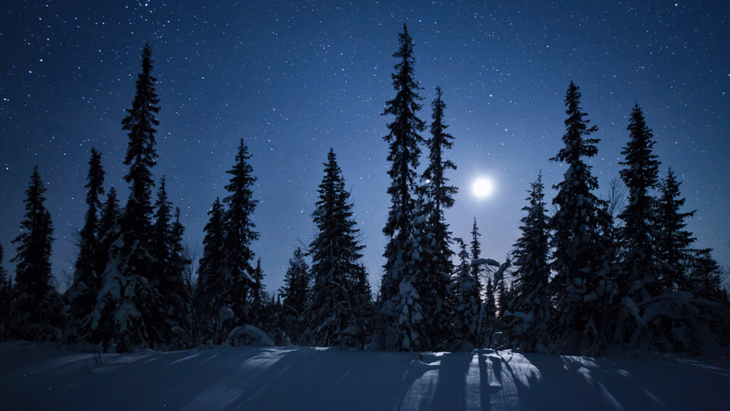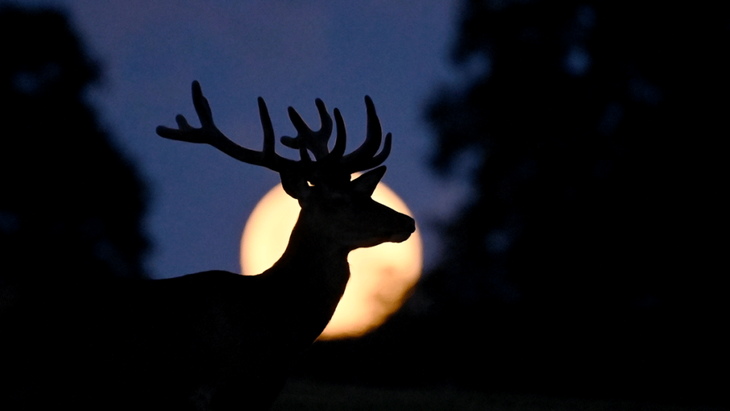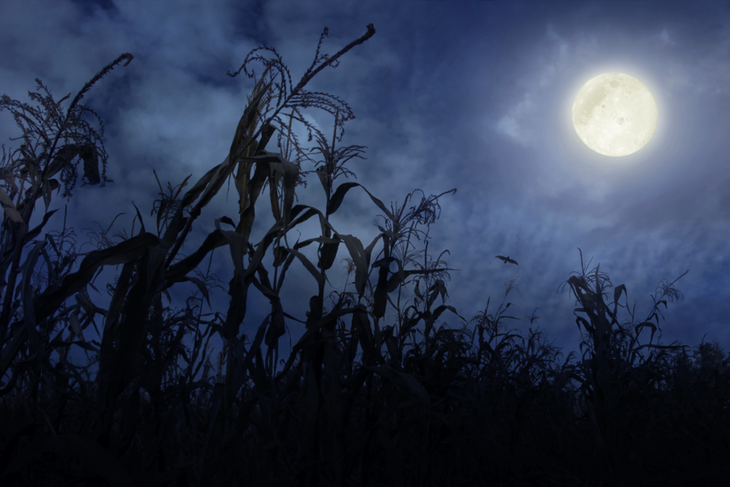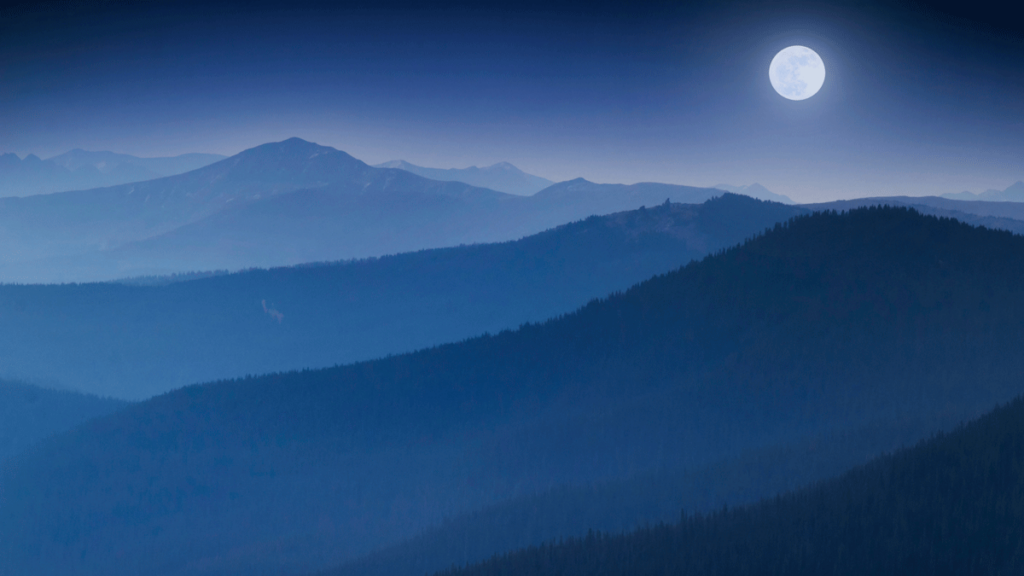“], “filter”: { “nextExceptions”: “img, blockquote, div”, “nextContainsExceptions”: “img, blockquote, a.btn, ao-button”} }”>
Indigenous cultures have long had a deep reverence for all things natural and heavenly. The movement of the Moon through its cycles was considered a guide to the passage of time. More than mere timing, this signpost was understood as a synchronization of cosmic and earthly cycles. By attuning to the Moon, indigenous peoples reinforced their role in the largest tapestry of existence.
“The cycle of the Moon is a sacred part of our culture and identity,” says Sara Thompson, a writer and yoga teacher who learned about the relevance of the Moon from her grandmother, a member of the ojibwe tribethe most populous indigenous community in North America.
Each full moon marks the completion of a month, a concept known as “moon time.” North American cultures attributed names to each full moon throughout the year based on the significant seasonal activities that took place during their lunar time.
The number of indigenous full moon names is vast and diverse. The naming conventions of each tribe are closely tied to their cultural fabric, with hundreds of tribes throughout North America. Although the use of certain names has faded, their resonance with the natural world remains a testament to the rich heritage and wisdom of indigenous cultures.
By recognizing and respecting the traditional names for the full moon, we cultivate a deeper appreciation of the interconnectedness of all living things, as well as our relationship with nature and the celestial realms. We also create a bridge between the wisdom of the past and contemporary life.
Full moon names and what they mean
Preserving the indigenous names for full moons reminds us of a time when we existed more in harmony with the natural world. This relationship not only continues, but it has lessons to teach us, if we’ll just pay attention.
January
Common Known As: Wolf Moon
Also: Great Spirit Moon, Ice Moon, Winter Moon, Cracking Tree Moon
With the turn of the year, the nights are long and temperatures hover around freezing. Here, in the dead of winter, food is scarce and energy is low. Wolves they howled into the night, piercing the cold air with the resonance of their calls. The cries were once thought to be due to hunger, though we now know they were relied on to locate the rest of the pack, define territories, and communicate socially. Due to the increased vocality during this time of year, the January moon was dubbed the wolf moon.

February
Common Known As: Snow Moon
Also: Suckerfish Moon, Full Hunger Moon, Eagle Moon, Deep Snow Moon
Typically a time of heavy snowfall in North America, February is when winter puts its last flourish. With the ground covered in white, it’s easy to understand why the full moon name known to many tribes is the snow moon. The Ojibwe tribe, however, named it after the Catostomidae or Sucker Fish, which was a plentiful and essential source of nutrition for Native Americans during the winter. (Remnants of stone fish traps still exist along spawning rivers in Ahjumawi Lava Springs State Park in northeastern California, which was inhabited by the Achomawi band of the Pit River Native American tribe).
March
Common Known As: Moon Worm
Also: Hard Crust on Snow Moon, Raven Moon, Goose Moon, Wind Moon
With rising temperatures, the snow begins to melt, turning the ground into mud. The name March Moon is often attributed to the turning point of the terrain, a moment that awakens the worms and attracts the return of the birds that hunt them. An alternative interpretation from the late 1700s was described by explorer, cartographer, and author Jonathan Carver, who suggested that the term “worm” refers to larvae that emerge from the bark of trees and other sheltered places during spring.
April
Common Known As: Pink Moon
Also: Boiling Maple Sap Moon, Sugarbush Moon, Frog Moon, Grebe Moon
As the first wildflowers emerge, the wild ground phlox becomes noticeable. Known colloquially as “rose moss,” this low-growing plant once blanketed the eastern parts of North America each April in swathes of pink, blue, purple, and white. Alternative names associated with this season announce the characteristics or characters commonly associated with the time of year.
Can
Common Known As: Moon Flower
Also: Budding Moon, Serpent Moon, Planting Moon, Dancing Moon
This month also brings wildflowers that flood the land with a variety of sights and smells. Some May Moon names honor budding and flowering, while other moon titles reflect a more practical mindset by referring to this as the time when crops are planted.
June
Common Known As: Strawberry Moon
Also: Gardening Moon, River Moon, Birthing Moon
As the summer heat begins to take hold, wild fruits and edible plants begin to thrive. Strawberries, once abundant in much of the United States, heralded a new chapter in the natural cycle, one of abundance. The Indian tribes almost unanimously refer to the June Moon as the Strawberry Moon, although it is sometimes known as the Birth Moon, which also refers to the vital fertility of the earth.

July
Common Known As: Buck Moon
Also: summer moon, blueberry moon, flying moon, bee honeymoon
In July, the Full Moon naming begins to move away from plants and back into the animal world. During the summer, the antlers of the bucks, or bucks, grow in full force. With an abundance of plant life, deer and bucks thrive on the North American plains and are an important source of food not only for the summer, but also for the cooler months to come, given the preservation techniques of smoking and drying.
August
Common Known As: Sturgeon Moon
Also: Rice Moon, Blackberry Moon, Dry Moon, Hot Moon
The Sturgeon Moon of August refers to a species of fish that can be found along the Atlantic coast, stretching from the Gulf of Mexico to Newfoundland. Sturgeon also inhabit the vast expanse of the Great Lakes region and thrive in the waterways of the St. Lawrence, Missouri, and Mississippi rivers. Several species can grow to over 12 feet in length, making this colossal fish a deeply admired and sometimes spiritualized source of nutrition and life for tribes.

September
Commonly Known As: Harvest Moon
Also: Color Changing Leaves Moon, Corn Moon, Moose Moon, Pumpkin Moon, Somebody’s Harvesting Moon
The September moon means that the fall crops are ready for harvest, another crucial change in the cycles of nature. As the autumnal equinox approaches and the crops are harvested, communal celebrations were common. The tribes gathered to celebrate, dance, connect and give thanks before beginning preparations for the coming cold.
October
Common Known As: Hunter’s Moon
Also: Falling Leaves Moon, Someone’s Moon Stores Food, Hunting Moon
October marks the prime time for hunting, as game is at its healthiest after the midsummer feast. Also, as the trees begin to lose their leaves, there is little shelter for prey to hide. For hunter-gatherers, the importance of hunting and storing resources is critical to survival. As the nights grow longer and colder, this is an opportune time to gather food and store fur for the coming winter months. This is the Hunter’s Moon.
November
Common Known As: Beaver Moon
Also: Frozen Moon, White Fish Moon, First Snowy Moon, Little Winter Moon
As winter slowly begins to take hold, one last month of hunting arrives. beavers, they are also making their final preparations for the coming winter and retiring to their cabins, making them easier to hunt. Alternative full moon names for November speak of the onset of winter.
December
Common Known As: Cold Moon
Also: Little Spirit Moon, Big Winter Moon, Long Night Moon, Storytelling Moon
In December the winter solstice arrives and the seasonal cycle returns to its origin. Long nights and low temperatures bring back the snow and encourage families and tribes to gather around the fire. As winter grips the land, activities shift from hunting and gardening to storytelling, repairing, and chatting with loved ones. The cold may seem exhausting and the nights long, but there is the knowledge that the Sun will return and the cycle will begin again.
About our partner
Sierra is a writer, yogi, and music lover living in the Pacific Northwest. She has been practicing yoga for almost a decade and became certified to teach in 2018. She writes and teaches all about connection: the connection to the body, nature, and the universal love that holds us together. She is also the author of your year of magica moon magic journal and a witchcraft workbook. For free yoga and magical wisdom, find Sierra at elmísticolocal.comOn Instagram @thelocalmysticand in Youtube.
